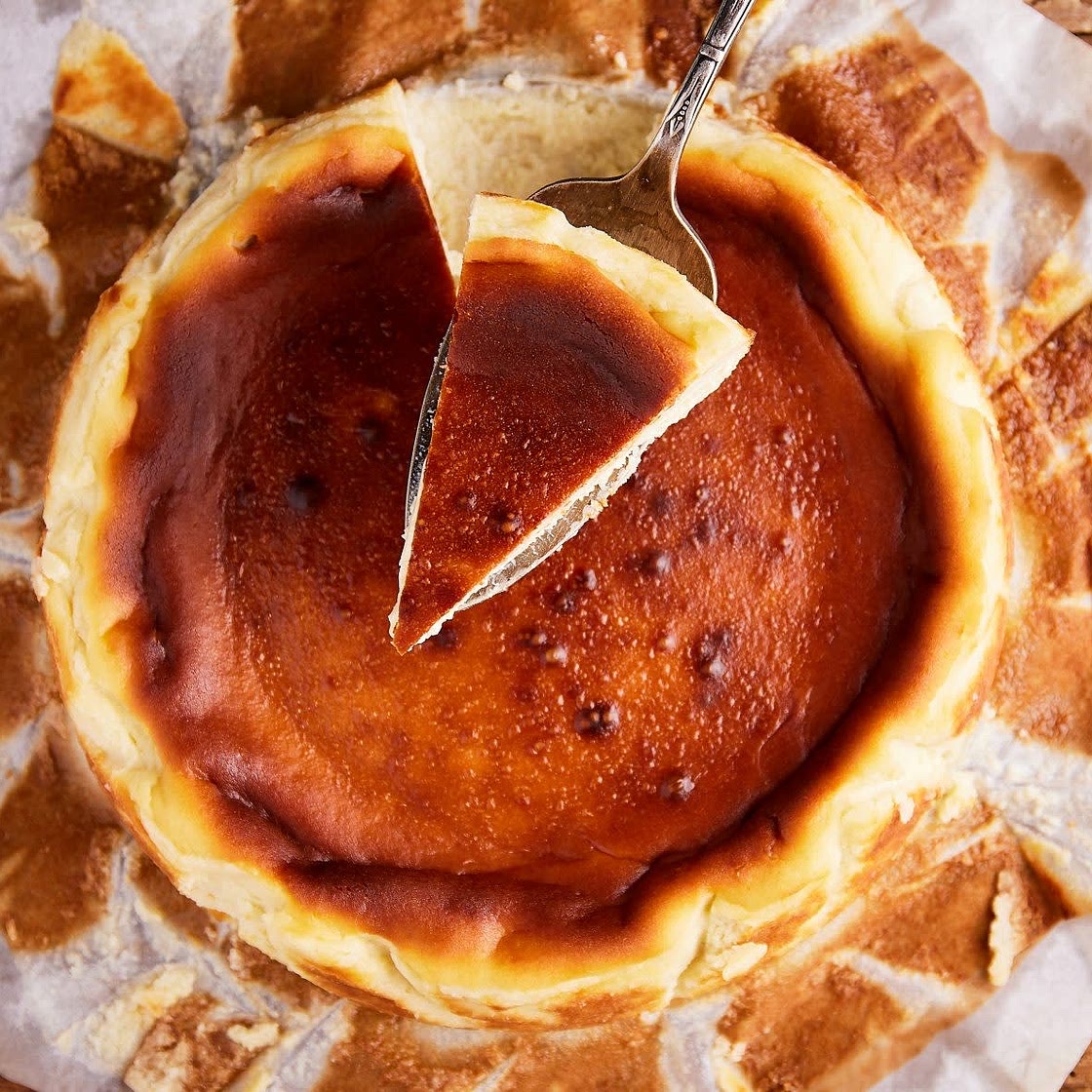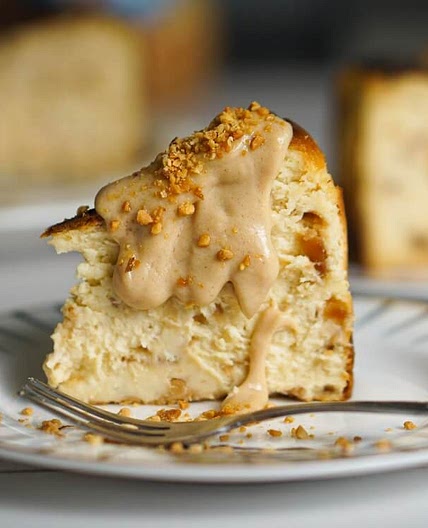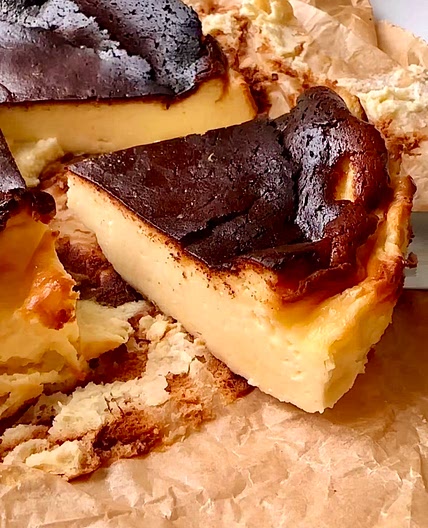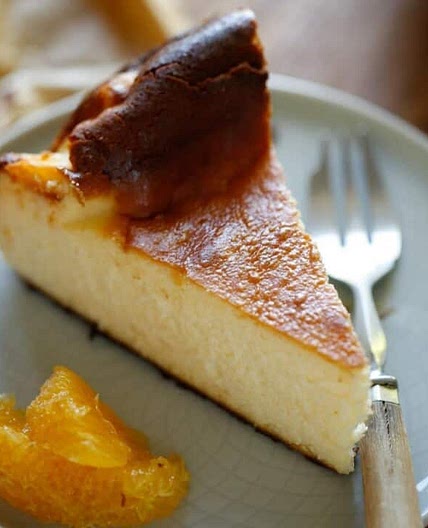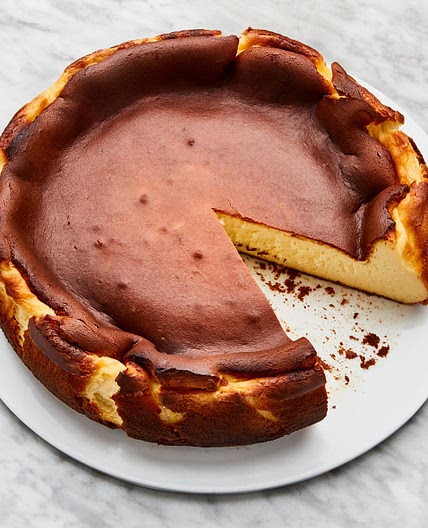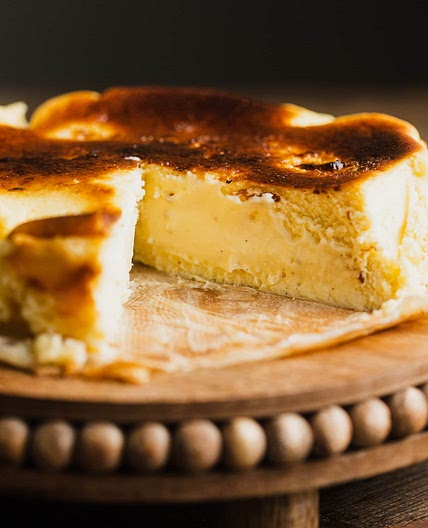By echoqueen
BASQUE-STYLE CHEESECAKE
Created in the 1990s by Spanish chef Santiago Rivera, Basque cheesecake, or tarta de queso vasca, has garnered global acclaim for its blistered, “burnt” surface and creamy-smooth center. The crustless cake bakes in a parchment-lined pan in a hot oven—no water bath needed—until the center is just barely set. Room-temperature dairy is key for ensuring a lump-free batter, but then thoroughly chilling the batter (at least 6 hours) before baking allows the cake to spend enough time in a hot oven to achieve dramatic coloring without overcooking. After much trial and error, we found that the style of springform pan makes a huge difference in how the cake bakes. For a pan with a light-colored finish, bake at 450°F; for a dark-colored pan, such as nonstick, 425°F is best. Start checking doneness after 40 minutes; a digital thermometer is best for testing the temperature. The cake keeps well in the refrigerator for at least three days. Basque cheesecake sometimes is served at room temperature, but we prefer it with a bit of a chill.
Updated at: Fri, 20 Oct 2023 23:54:02 GMT
Nutrition balance score
Uh-oh! We're unable to calculate nutrition for this recipe because some ingredients aren't recognized.
Ingredients
0 servings
Instructions
Step 1
In a liquid measuring cup or small bowl, whisk together the whole eggs and yolks. In a stand mixer with the paddle attachment, mix the sugar, lemon zest and salt on low until fragrant, about 30 seconds. Add the cream cheese and beat on medium-low until no lumps remain, 2 to 3 minutes, scraping the bowl and paddle attachment a few times. With the mixer on low, slowly add the beaten eggs in 4 or 5 additions, occasionally scraping the bowl and mixing after each addition until fully incorporated, 15 to 20 seconds, before adding more. Scrape the bowl. With the mixer on low, add the crème fraîche a spoonful at a time. Detach the bowl from the mixer and stir with a silicone spatula, making sure to scrape the bottom and sides of the bowl. Cover and refrigerate until thoroughly chilled, at least 6 hours or up to 24 hours.
Step 2
About 30 minutes before you are ready to bake the cake, adjust an oven rack to the lower-middle position. If your pan is light in color, heat the oven to 450°F; if your pan has a dark finish, heat to 425°F. Cut a 14- to 15-inch round of kitchen parchment. Line a 9-inch springform pan with the parchment round, pushing the paper into the edges and against the sides of the pan, allowing it to form folds and pleats; set aside.
Step 3
When the oven is at temperature, pour the cold batter into the prepared pan; if needed, spread in an even layer. Rap the pan against the counter a few times to remove any large air bubbles. Bake until the cake is deeply browned and an instant thermometer inserted at the edge with the probe angled so the tip is at the center of the cake reaches 150°F to 155°F, 40 to 55 minutes; once the cake nears 150°F, the temperature tends to rise quickly, so check every 3 to 4 minutes. Even when done, the center of the cake will jiggle when the pan is gently shaken. Transfer to a wire rack and cool for 1 to 2 hours; the cake will deflate as it cools.
Step 4
Refrigerate the cake, uncovered (it will still be warm), until chilled, at least 4 hours or up to 3 days (if storing for more than a day, cover with foil once the cake no longer is warm). Let stand at room temperature for about 30 minutes before serving. To serve, remove the sides of the pan, then set the cake, still on the springform base, on a platter. Pull the parchment away from the sides of the cake and cut the cake into slices.
Step 5
Don’t begin making the batter until the cream cheese, eggs and crème fraîche are at room temperature. Also, be sure to use the paddle attachment, not the whisk, to avoid incorporating excess air into the batter. Finally, don’t be alarmed by how jiggly the cheesecake is when it comes out of the oven. As it cools and chills, it will set up beautifully.
Notes
1 liked
0 disliked
Delicious
Easy
Go-to
Special occasion
